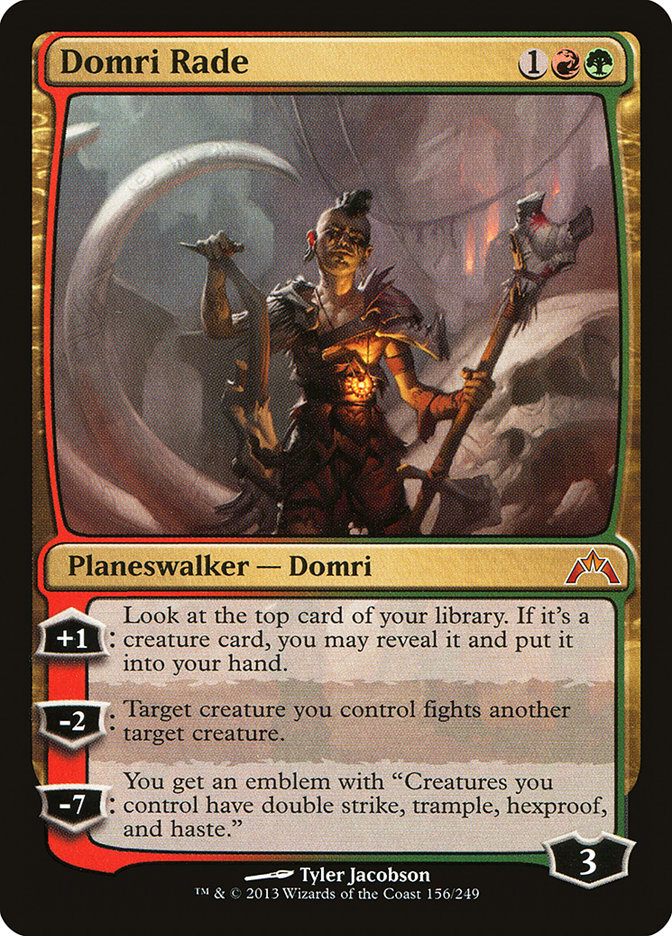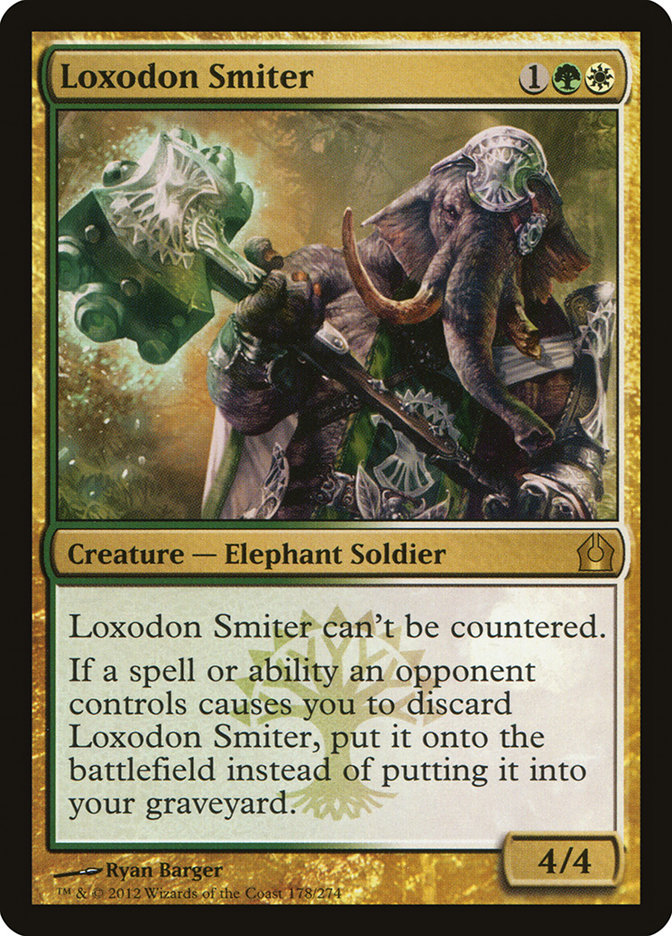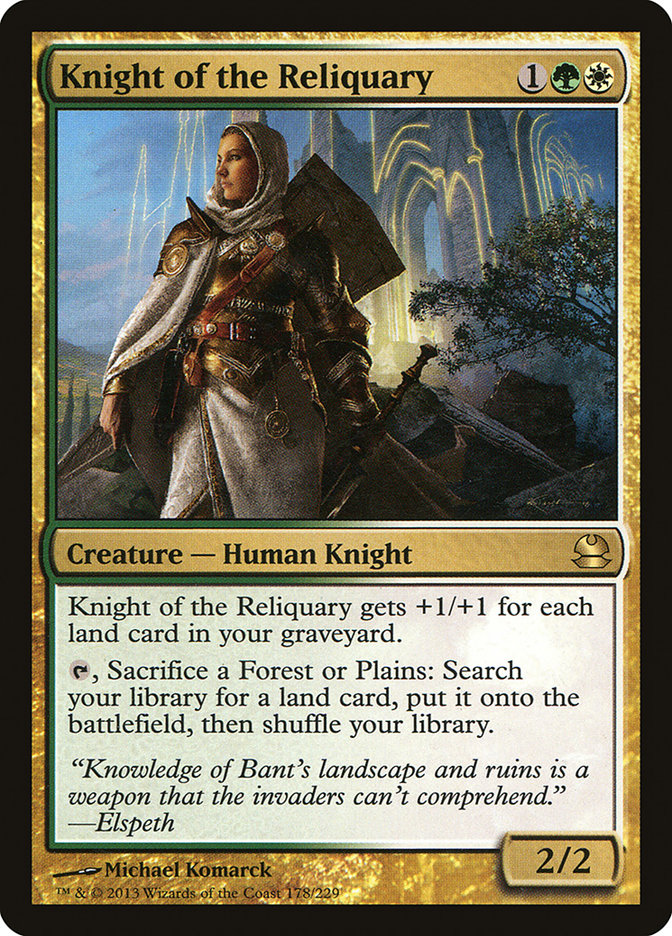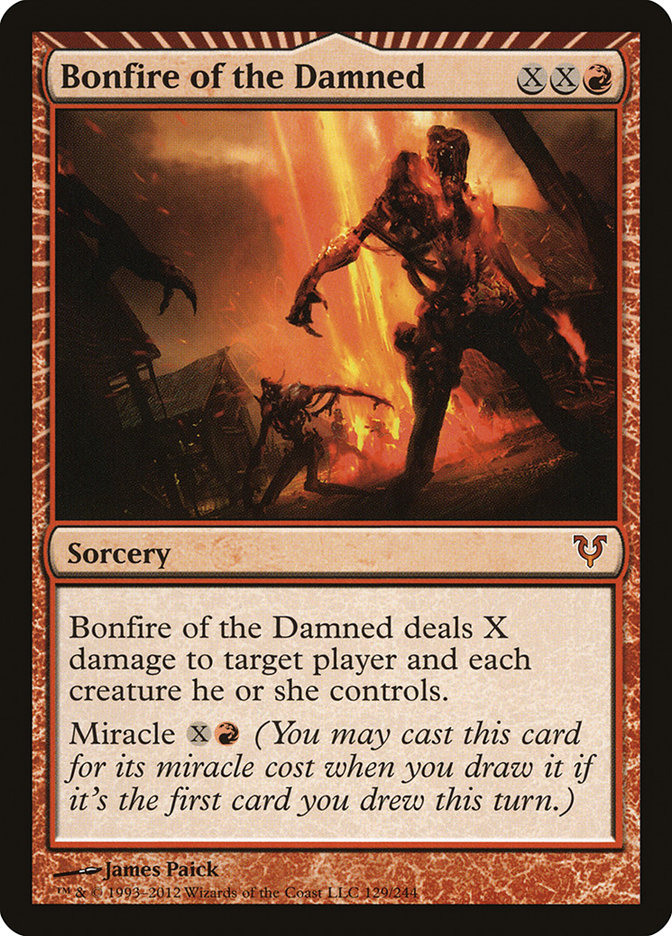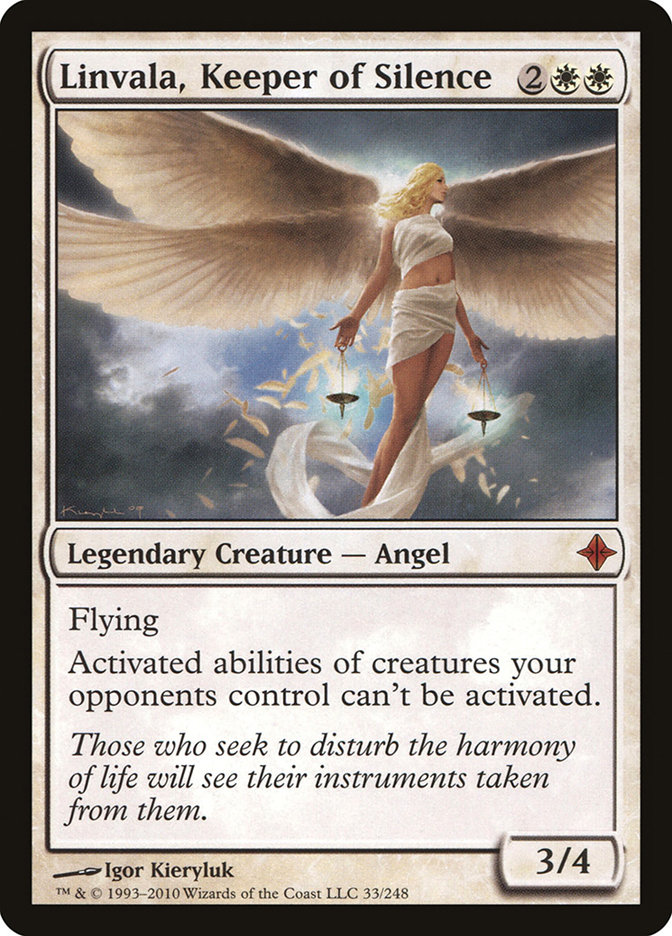If you had told me that this past weekend in Detroit I would beat every combo deck I played against and lose to almost every Jund deck I faced, I would not have believed you. As those of you who have watched my video series on the evolution of this most recent version of my deck have witnessed, the strength of Domri Naya lies in its ability to outperform other fair decks. I came into Detroit expecting a field heavy with Jund, U/W/R, Pod, and Affinity, all decks that I felt confident beating, while I hoped to avoid matchups like Tron and Splinter Twin. In the end, it was Jund and nothing but Jund that kept me out of the Top 8, and I had to settle for a Top 16 finish.
Modern is a strange format. You can easily look at the most recent Top 8, see six Jund decks, and determine that Jund is massively overpowered and something has to be done about it. Or you can look at the fact that the winning deck of the event was Melira Pod and realize that this is the third straight Grand Prix to be won by that archetype despite the introduction of Scavenging Ooze into the environment. And that’s to say nothing of the overwhelming popularity of U/W/R Control at the recent World Championship.
I think that Modern as a format is pretty much fine. There is a wide range of powerful strategies you can choose to play, and people tend to gravitate to the style of deck they enjoy and know well and are able to compete with. That doesn’t mean that the format is as healthy as it could be, and after the results from Detroit and the prevalence of Jund, it’s entirely possible that things could go downhill.
The biggest problem with Jund is that there is very little you can do about it if it’s the best deck. I talked about this last year after Pro Tour Return To Return to Ravnica. So many of the cards in Jund are so universally effective at answering anything you can possibly throw at them that you can’t even sideboard against the deck very effectively. I’ve seen people argue that the difficulty in combatting Jund is due to it simply being a collection of strong cards rather than a deck with a specific plan, but the real problem is that its disruption is too universally effective. Any card you play to try to beat them can simply be stripped out of your hand. Literally, if you had a card that said "win the game if your opponent is playing Jund," you could still easily lose when your opponent makes you discard it with Thoughtseize, Inquisition of Kozilek, or Liliana of the Veil.
Last year around this time, I was fed up with losing to Jund in the Pro Tour, and I decided to build a deck specifically to fight against the core strengths of Jund. My deck featured the full four copies of Loxodon Smiter, Wilt-Leaf Liege, and Lingering Souls, aiming to neuter my opponent’s Lilianas and discard spells. And you know what happened? While I won more against Jund than I lost, it was not by much. Instead of taking my threats, those Inquisitions just took my mana creatures and removal spells. The only time my anti-discard suite could truly punish my opponents was when they foolishly ticked up a Liliana or happened to play a Thoughtseize when I had nothing but a Smiter in my hand. My "anti-Jund" deck put up at best a 55% or so win rate in the matchup it was designed for.
The deck I played in Detroit certainly wasn’t designed as "anti-Jund"—I actually built it primarily to combat U/W/R back when that was extremely popular earlier in the year. My inspiration actually came from messing around with Domri Rade and Phyrexian Obliterator in the same deck for kicks and realizing just how powerful Domri is given the quality of creatures and mana acceleration available in Modern. I built the Modern Naya shell for my favorite Standard-legal planeswalker specifically to line up well against decks relying on Lightning Bolt for removal, with virtually every creature surviving the ubiquitous removal spell and those that don’t offering an immediate impact if they aren’t killed right away. I finished in the Top 8 of GP San Diego with the deck before losing to Eggs, though I wasn’t able to repeat my performance at the next Modern Grand Prix in Portland.
I abandoned the deck after Scavenging Ooze was printed, fearing that it would hurt the power level of Knight of the Reliquary to a degree that ruined the deck and having very little time to test for the World Championship. After my disappointing performance at Worlds in Modern, I decided to give Naya another shot; I found that while the damage from Ooze is real, it isn’t enough to make the deck untenable in the format. With GP Detroit approaching, I started working on the deck in earnest again.
You can watch the progression of the deck in my Modern videos both here and here. Most of the core remained the same over my testing, but the sideboard progressively changed to what you see here:
Creatures (25)
- 4 Tarmogoyf
- 4 Noble Hierarch
- 4 Knight of the Reliquary
- 3 Scavenging Ooze
- 4 Loxodon Smiter
- 3 Deathrite Shaman
- 3 Voice of Resurgence
Planeswalkers (5)
Lands (23)
Spells (7)

Why is this deck good? The biggest reasons are Domri Rade and Loxodon Smiter. Domri is incredibly powerful against any opponent who is trying to beat you either by killing your creatures or playing creatures of their own. He provides a continuous flow of card advantage that threatens to win the game if he’s allowed to go ultimate or a source of repeatable creature removal in games where board presence is king. Domri is much more powerful in Modern than he is in Standard because the cheap creatures are much stronger and card advantage is harder to come by. On top of that, the existence of fetch lands gives you both a higher virtual creature count because you’re constantly thinning lands out of your deck and the ability to shuffle away cards on top of your deck when you miss with Domri’s +1 ability.
Loxodon Smiter is similarly a much stronger card in Modern than in Standard. Not only is it less likely to get outclassed by something like a Thragtusk in Modern, but the anti-discard and anti-counterspell abilities are both very relevant. Cards like Remand and Mana Leak are very popular in Modern, and it’s incredibly backbreaking for your opponent to hold up mana to cast one of them and then face a big creature that they can’t do anything to stop. And while your opponents can still choose other cards from your hand with Inquisition of Kozilek or Thoughtseize, the threat of Smiter alone is often enough to keep them from getting more than a single edict effect out of Liliana. And sometimes you just get a free 4/4 out of the deal, which is more than okay.
Back when I first built this deck, I would have included Knight of the Reliquary among the star players as well, but the existence and popularity of Scavenging Ooze means that’s no longer as true. Knight still offers a great deal of versatility and power, but it’s a much weaker mid to late-game draw against Jund decks than it once was because Scavenging Ooze can so quickly clear all of the lands out of your graveyard. In all three of the Jund matches I lost in Detroit, a major culprit was Knight’s vulnerability to opposing graveyard removal effects, whether they were Scavenging Ooze or Deathrite Shaman. I still feel like the card is worth playing because it’s incredibly powerful a high percentage of the time, but it’s certainly not the powerhouse it once was. Which is sad, really, because it’s my favorite Magic card of all time.
The main weakness of this deck is its matchups against the so-called "unfair" decks. Without universally effective disruption like Jund has, you’re far more vulnerable to the actual text on the cards your opponent chooses to put in their deck (crazy, I know!). That means decks like Scapeshift, Tron, and Splinter Twin can be difficult to beat. You have a fighting chance against all of them simply because you’re able to put on a reasonably fast clock with Smiter, Knight, Goyf, and the like, and it certainly helps that your creatures are resilient to the commonly played removal spells. But you’re not really doing anything nearly as powerful as they are—if they’re able to live long enough to manifest their game plan, you’re going to lose, and there’s not a ton you can do about it.
That’s why the sideboard plan against all three of these decks revolves around mana disruption. I previously played Blood Moon in my sideboard and used it to some effect at GP San Diego and in my recent testing, but ultimately I found it just wasn’t working well enough. I had a number of experiences—including both of my losses to Scapeshift at GP San Diego—in which I played an early Blood Moon and still lost.
While turning all of my opponent’s Tron lands or Valakuts into Mountains certainly slows them down, it also significantly disrupts my own game plan. Even if I fetch my basic lands, I’m still left without the ability to use Knight of the Reliquary effectively, and sometimes I’m pressured to play Blood Moon early off of a mana creature without any basics and then if that dies am pretty much helpless. Tron already has Nature’s Claim against you to handle Blood Moon or Stony Silence, and most Scapeshift decks have something like Wurmcoil Engine, Primeval Titan, or Inferno Titan to win with Blood Moon in play anyway, so it just didn’t seem good enough.
That’s why I removed Blood Moon and switched to a combination of Fulminator Mage, Ajani Vengeant, and Choke. With Fulminator, you can often set back Tron enough that you’re able to just beat them to death with your creatures, especially with Stony Silence and Aven Mindcensor to shut down much of their ability to dig—exactly how I squeaked out a win against Tron in Detroit. Choke and Fulminator similarly work together well against U/W/R, Scapeshift, Storm, and Splinter Twin—basically any blue-based control or combo deck. I got pretty much a free win against a Glimpse / Archive Trap Mill deck at the Grand Prix simply by playing a third turn Choke into his mana base of nothing but Islands.
The other big upgrade to my old sideboard was Bonfire of the Damned. Bonfire helps cover a lot of bases in a single card. It gives you a sideboard option against Pod decks that can trump their Gavony Township grinding plan—I had some seriously sweet Bonfires against a couple of Pod decks in Detroit. It also happens to be a very powerful tool against decks like Affinity and B/W Tokens that rely on a bunch of small creatures to beat you. Many fair decks struggle with these sorts of strategies because they’re resilient against spot removal, but Bonfire gives you a sweeper that’s legitimately powerful against them even if you never miracle it and just hard cast it for one or two.
The most disappointing card in my sideboard was Linvala because I can directly attribute two of my losses to the fact that it was in my deck. I debated the night before what my final sideboard slot should be, and I was deciding between a single copy of Linvala and the fourth Path to Exile. I’m not a huge fan of Path since the drawback of giving your opponent a land is very real and I rarely want to actually cast it early. That said, it’s your best removal option against a lot of creatures, and I felt like I wanted one more card against creature-based combo decks like Pod.
Ultimately, I decided to play Linvala since it can shut down Deathrite Shaman and Scavenging Ooze against Jund as well. I only drew the card three times in the tournament—once in a game in which I’d already Bonfired away my opponent’s entire board and was about to go ultimate with Domri and twice in situations where I did not have the second white mana to cast it and died to a Scavenging Ooze that I would have loved to have been able to Path.
If there were another Modern tournament this weekend, I would play this deck again in a heartbeat—except I’d play a Path instead of that damn Linvala. As I said in the introduction, all of my losses were to Jund, but I feel like the matchup is generally quite favorable. All of your cards are quite powerful against them and generally match up favorably, and if the game goes on long—as it generally does—they start drawing useless discard spells while you’re still drawing gas. As it happened, my opponents’ draws just lined up perfectly against mine, and I lost three very close matches—two of which I almost certainly would have won with that Path.
As for the overall state of Modern, I don’t think anything needs to be banned. I think the format would be a better place without some of the cards that are currently legal, and I also think there are some cards that could certainly come off the banned list. Most notably, it’s totally absurd that Birthing Pod is legal while Green Sun’s Zenith is banned, and it’s still a total joke that Wild Nacatl ever got the axe. Patrick Sullivan has been championing that the fetch lands ought to get the boot since not only do they eclipse every other mana fixing option in the format and enable cards like Deathrite Shaman and Tarmogoyf but they also cause logistical issues at events simply because of how much time they cost in searching and shuffling. I doubt WotC would take any measure quite so extreme and am not sure I think it’s the right direction, but it’s certainly food for thought.
What do you think?
Until next time,
bmk

